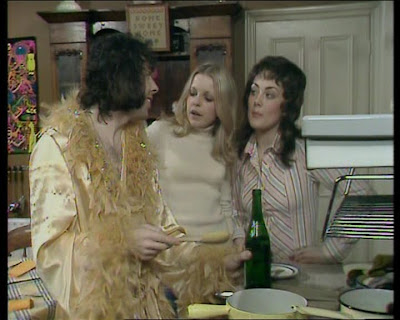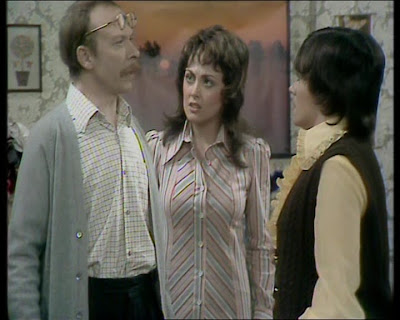Dr. No was made in 1962 and starred Sean Connery as 007 James Bond. Doctor No was the first James Bond film. Based on the 1958 Ian Fleming novel of the same name, it was adapted by Richard Maibaum, Johanna Harwood, and Berkely Mather and was directed by Terence Young. The film was produced by Harry Saltzman and Albert R Broccoli, a partnership that would continue until 1975.
In the film, James Bond is sent to Jamaica on an investigation into the death of a fellow British agent. The murder trail leads him to the underground base of Doctor Julius No, who is plotting to disrupt an early American manned space launch with a radio beam weapon. Although the first of the Bond books to be made into a film, Dr. No was not the first of Fleming's novels, Casino Royale being the debut for the character; however, the film makes a few references to threads from earlier books.
Dr. No was produced with a low budget, but was a financial success. While critical reaction at release was mixed, over time the film received a reputation as one of the franchise's best instalments. The film was the first of a successful series of 22 Bond films; a 23rd is planned for release in 2012. Dr. No also launched a successful genre of "secret agent" films that flourished in the 1960s. The film also spawned a spin-off comic book and soundtrack album as part of its promotion and marketing.
Many of the iconic aspects of a typical James Bond film were established in Dr. No: the film begins with an introduction to the character through the view of a gun barrel and a highly stylised main title sequence, both created by Maurice Binder. Production Designer Ken Adam established an elaborate visual style that is one of the hallmarks of the Bond film series.

John Strangways, the British Intelligence (SIS) Station Chief in Jamaica, is ambushed and killed, and his body taken by a trio of assassins known as the "Three Blind Mice". In response, MI6 agent James Bond – Agent 007 is summoned to the office of his superior, M. Bond is briefed to investigate Strangways' disappearance and to determine whether it is related to his cooperation with the American Central Intelligence Agency (CIA) on a case involving the disruption of Cape Canaveral rocket launches by radio jamming.
Upon his arrival at Kingston Airport, a Female photographer tries to take Bond's picture and he is shadowed from the airport by two men. He is picked up by a chauffeur, whom Bond determines to be an enemy agent. Bond instructs him to leave the main road and, after a brief fight, Bond starts to interrogate the driver, who then kills himself with a cyanide-embedded cigarette.
During his investigation in Strangways' house Bond sees a photograph of a boatman with Strangways. Bond locates the boatman, named Quarrel, but finds him to be un-cooperative. Bond also recognises Quarrel to have been the driver of the car that followed him from the airport. Bond follows Quarrel and is about to be beaten by him and a friend when the fight is interrupted by the second man who followed Bond from the airport: he reveals himself to be CIA agent Felix Leiter and explains that not only are the two agents on the same mission, but also that Quarrel is helping Leiter. The CIA has traced the mysterious radio jamming of American rockets to the vicinity of Jamaica, but aerial photography cannot determine the exact location of its origin. Quarrel reveals that he has been guiding Strangways around the nearby islands to collect mineral samples. He also talks about the reclusive Dr. No, who owns the island of Crab Key, on which there is a bauxite mine: the island, and mine, are rigorously protected against trespassers by an armed security force and radar.
During a search of Strangways' house, Bond found a receipt, signed by Professor R. J. Dent, concerning rock samples. Bond meets with Dent who says he assayed the samples for Strangways and determined them to be ordinary rocks. This visit makes Dent wary and he takes a boat to Crab Key where Dr. No expresses displeasure at Dent's failure to kill Bond and orders him to try again, this time with a tarantula. Bond survives and after a final attempt on his life, sets a trap for Dent, whom he captures, interrogates and then kills.
Having detected radioactive traces in Quarrel's boat, where Strangways' mineral samples had been, Bond convinces a reluctant Quarrel to take him to Crab Key. There, Bond meets the beautiful Honey Ryder, dressed only in a white bikini, who is collecting shells. At first she is suspicious of Bond but soon decides to help him, leading them all inland to an open swamp. After nightfall they are attacked by the legendary "dragon" of Crab Key which turns out to be a flame-throwing armoured tractor. In the resulting gun battle, Quarrel is incinerated by the flame-thrower whilst Bond and Honey are taken prisoner. Bond and Honey are decontaminated and taken to quarters before being drugged.
Upon waking they are escorted to dine with Dr. No. He reveals that he is a member of SPECTRE (SPecial Executive for Counter-intelligence,Terrorism, Revenge, and Extortion) and plans to disrupt the Project Mercury space launch from Cape Canaveral with his atomic-powered radio beam. After dinner Honey is taken away and Bond is beaten by the guards.
Bond is imprisoned in a holding cell but manages to escape through a vent. Disguised as a worker, Bond finds his way to the control centre, a multi-level room full of high-tech instrumentation with an atomic reactor set into the floor, overseen by Dr. No from a command console. Bond overloads the nuclear reactor just as the American rocket is about to take off. Hand-to-hand combat ensues between Bond and Dr. No; the scientist is pushed into the reactor's cooling vat, in which he boils to death. Bond finds Honey and the two escape in a boat just as the entire lair explodes.
The character James Bond was introduced towards, but not at, the beginning of the film in a "now-famous nightclub sequence featuring Sylvia Trench", to whom he makes his "immortal introduction". The introduction to the character in Le Cercle at Les Ambassadeurs, an upmarket gambling club, is derived from Bond's introduction in the first novel, Casino Royale which Fleming had used because "skill at gambling and knowledge of how to behave in a casino were seen...as attributes of a gentleman". After losing a hand of Chemin de Fer to Bond, Trench asks his name. There is the "most important gesture [in]...the way he lights his cigarette before giving her the satisfaction of an answer. 'Bond, James Bond'." Once Connery says his line, John Barry's Bond theme plays "and creates an indelible link between music and character." In the short scene introducing Bond, there are portrayed "qualities of strength, action, reaction, violence - and this elegant, slightly brutal gambler with the quizzical sneer we see before us who answers a woman when he's good and ready." Raymond Benson, author of the continuation Bond novels, has stated that as the music fades up on the scene, "we have ourselves a piece of classic cinema".
Following the release of Dr. No, the quote "Bond ... James Bond," became a catch-phrase that entered the lexicon of Western popular culture: writers Cork and Scivally said of the introduction in Dr. No that the "signature introduction would become the most famous and loved film line ever". In 2001 it was voted as the "best-loved one-liner in cinema" by British cinema goers. In 2005, it was honoured as the 22nd greatest quotation in cinema history by the American Film Institute as part of their 100 years service.













